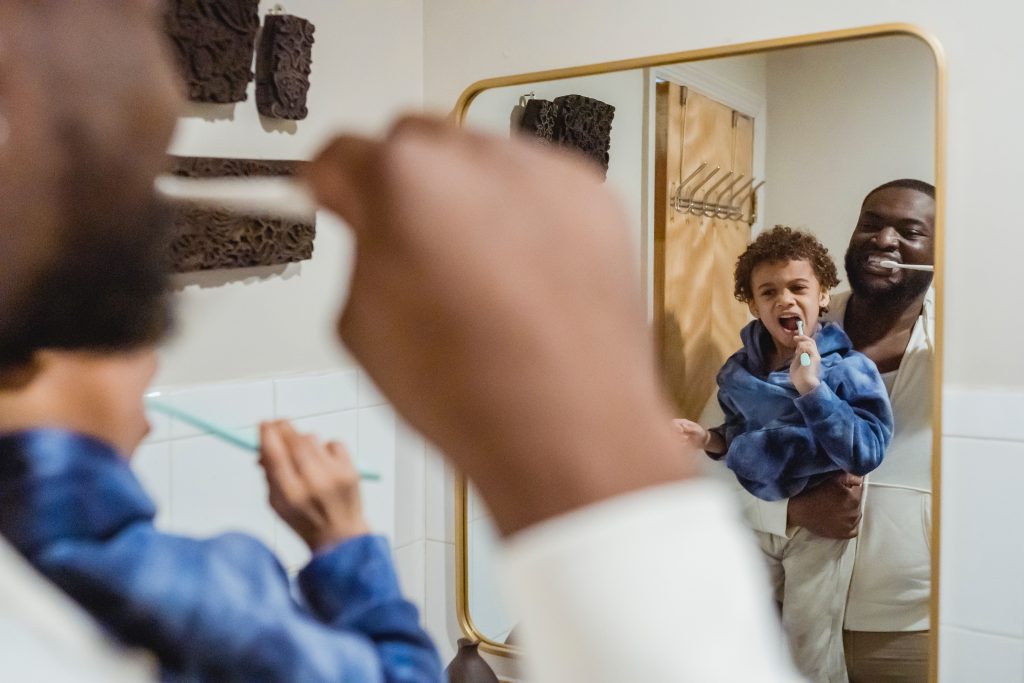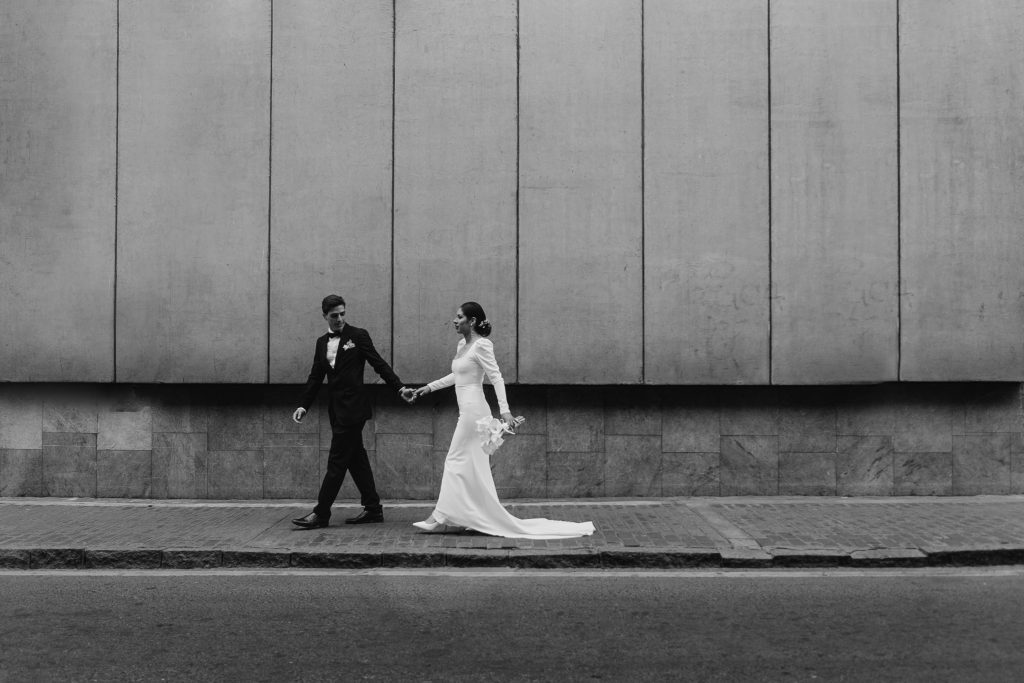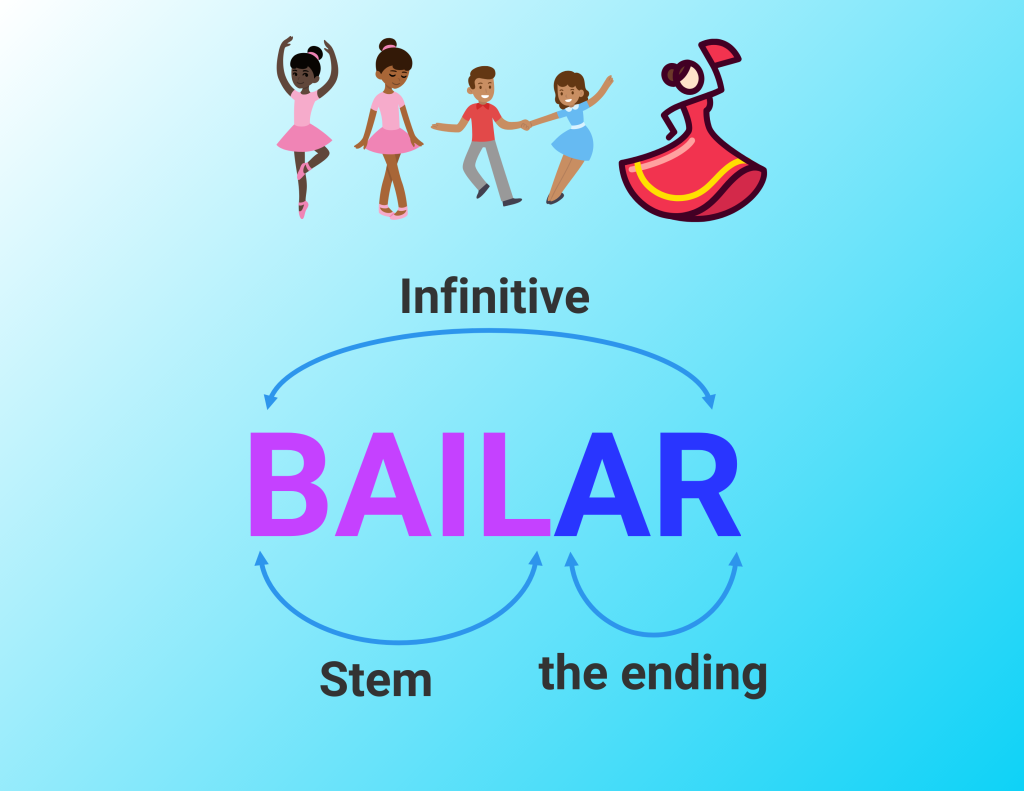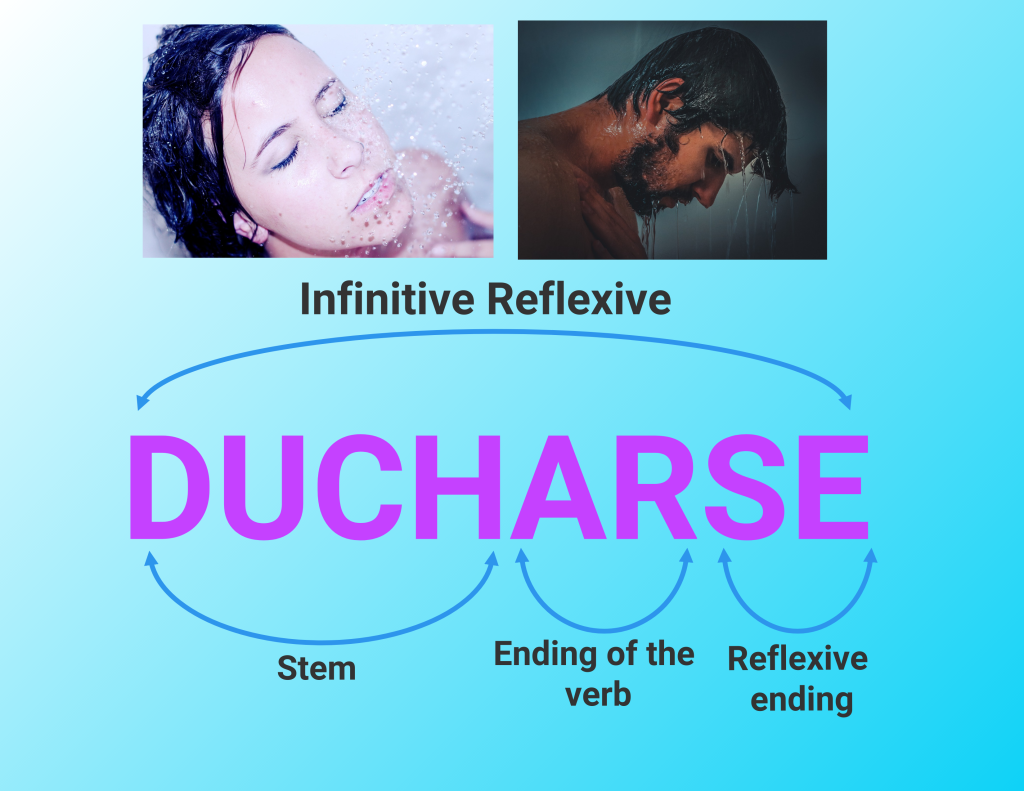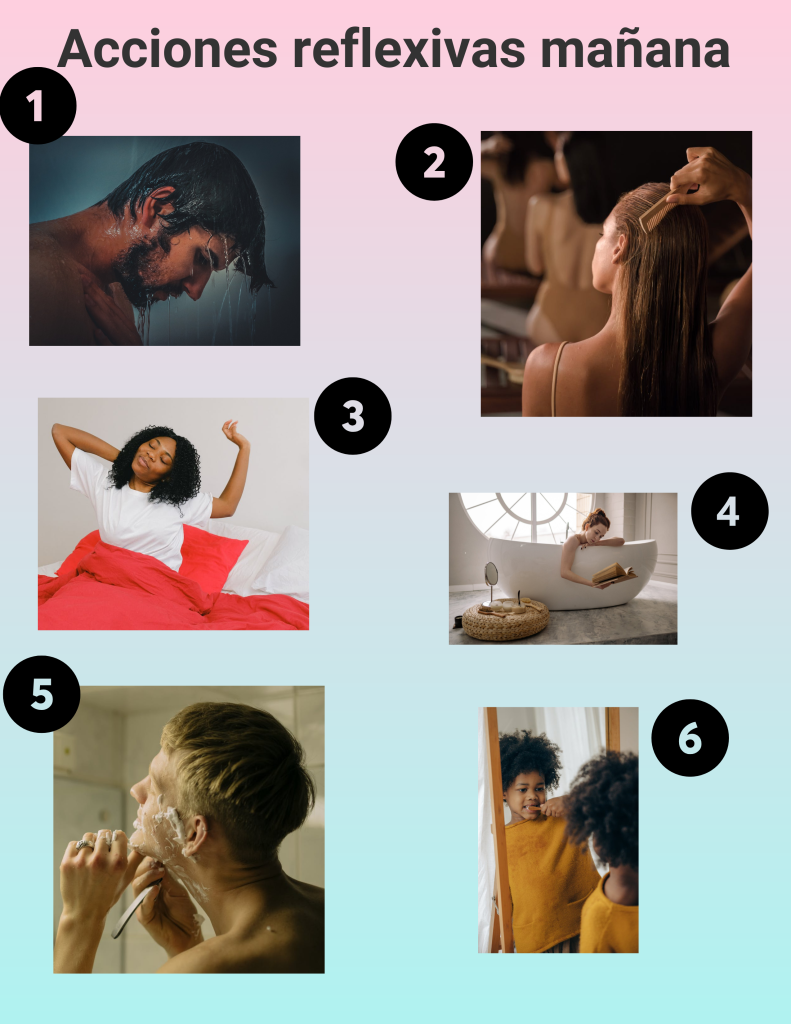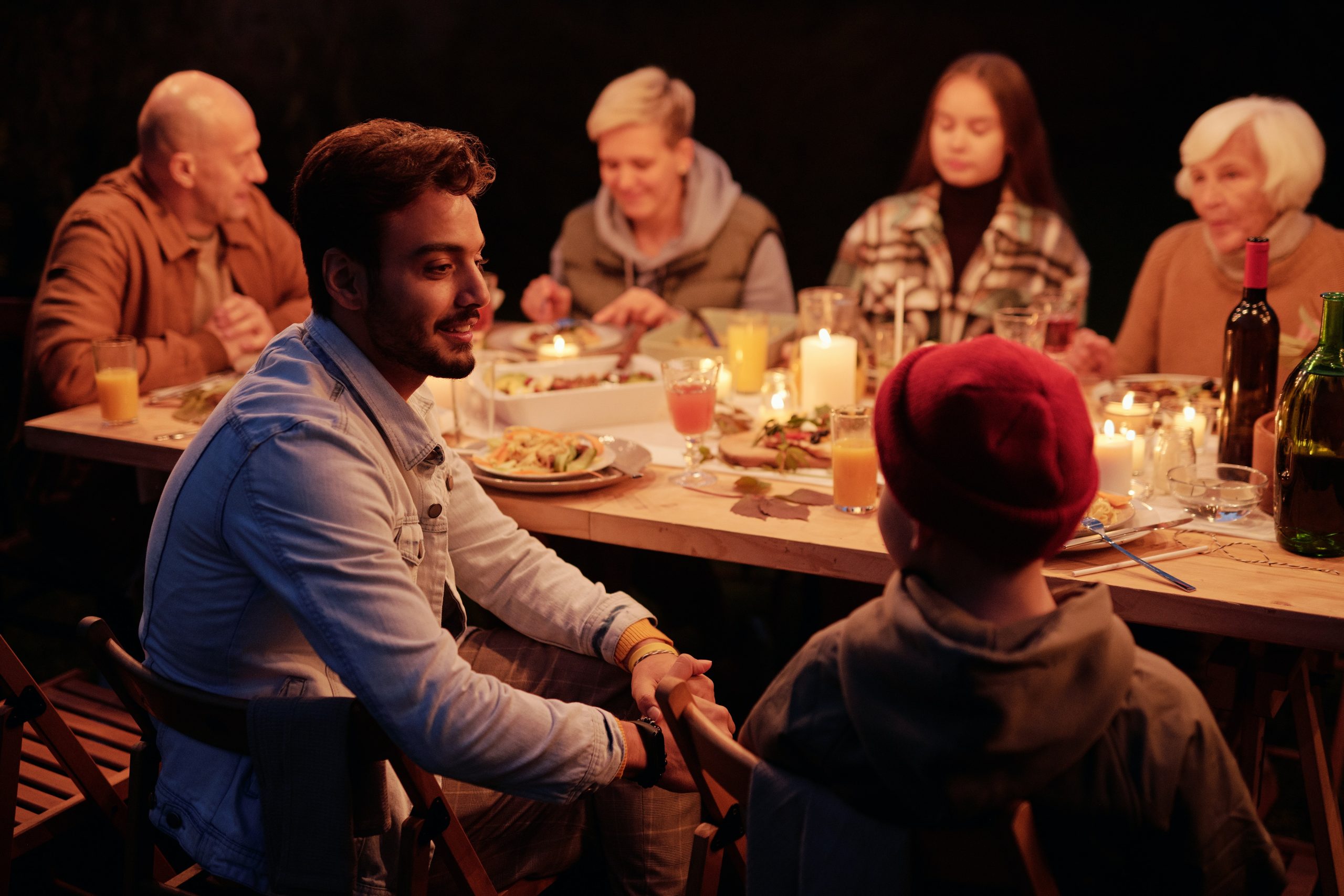Unidad 5 – Tercera Parte (Part 3)
Vocabulario
(Vocabulary)
1. Las actividades reflexivas (Reflexive activities)
A reflexive activity means that the subject of an action is also the receiver of the action. In other words, a reflexive activity means “you do the action to yourself”.
- Yo me lavo los dientes. (I brush my teeth)
- Mi mamá se ducha. (My mom showers)
- Tú te cepillas el pelo. (You-informal brush your hair)
- Yo me preparo para el trabajo. (I prepare for work)
1. Actividades reflexivas de rutina diaria
(Reflexive activities for daily routine)
Haz clic en el vocabulario de actividades reflexivas de rutina diaria to learn what they mean in English:
2. Actividades reflexivas de cambio de ánimo o emoción
(Reflexive activities denoting mood change or change in emotions)
Haz clic en el vocabulario de actividades reflexivas de cambio de ánimo o emoción to learn what they mean in English:
3. Actividades reflexivas de acción reciproca
(Reflexive activities for reciprocal actions)
Haz clic en el vocabulario de actividades reflexivas de acción reciproca to learn what they mean in English:
¡A practicar!
Responde las preguntas by translating from English to Spanish using el vocabulario de las actividades reflexivas:
Copy and paste the following letters and symbols as needed.
á é í ó ú ñ Á É Í Ó Ú Ñ ¡ ! ¿ ?
2. Objetos de cuidado personal (Personal care products)
Haz clic on the cross of each vocabulario de los objetos de cuidado personal to learn what they mean in English:
Cómo usarlo
(How to use it)
Tú sabes que one of the uses of el verbo Tener is to talk about possession or things we own.
Así, we can use el verbo tener to say what we have en el baño.
¡A practicar!
Responde la pregunta que sigue en español in a full sentence using el vocabulario de cuidado personal learned.
- ¿Qué productos de cuidado personal tienes en el baño?
Copy and paste the following letters and symbols as needed.
á é í ó ú ñ Á É Í Ó Ú Ñ ¡ ! ¿ ?
¡Más práctica!
- Haz una lista de productos de cuidado personal que tú tienes en el baño but are not listed en el vocabulario above.
- Llena la tabla que sigue con el vocabulario de las actividades reflexivas studied that you associate with los productos de cuidado persona que tú tienes en el baño. The first entry is provided to you as examples.
Copy and paste the following letters and symbols as needed.
á é í ó ú ñ Á É Í Ó Ú Ñ ¡ ! ¿ ?
| Productos de cuidado personal | Actividades reflexivas |
|---|---|
| el jabón | ducharse, lavarse |
Gramática
(Grammar)
Los verbos reflexivos en el presente simple indicativo (Reflexive verbs in simple present tense)
You already know that el español classifies verbos as verbos regulares y verbos irregulares.
You already know that los verbos regulares are classified into verbos infinitivos ending in -ar, -er, -ir as in bailar, correr, escribir.
You already know how to conjugate los verbos regulares y los verbos irregulares en el presente simple indicativo which tells that an action happens in the present.
Los verbos reflexivos en español son actividades that describe actions we do to ourselves.
- Yo me lavo los dientes. (I brush my teeth)
- Mi mamá se ducha. (My mom showers)
- Tú te cepillas el pelo. (You-informal brush your hair)
- Yo me preparo para el trabajo. (I prepare for work)
En la unidad 3 you learned the following components of an infinitive verb en español:
Ahora, mira la imagen que sigue to learn the components of an infinitive reflexive verb en español:
You already know that unlike in English, the ending of the verb en español tells us what type of verb it is: -ar, -er, -ir and that depending on the ending, the regular verb en español will follow a common pattern of conjugation in simple present tense.
Los verbos reflexivos en infinitivo also carry a reflexive ending which follows a structure of conjugation for all reflexive verbs.
| Subject Pronouns | Reflexive Pronouns | Verb "ducharse" (conjugated in present tense) | Equivalent in English |
|---|---|---|---|
| Yo | me | ducho | I shower myself |
| Tú | te | duchas | You (informal) shower yourself |
| Usted / Él / Ella | se | ducha | You (formal) shower yourself He showers himself She showers herself |
| Nosotros / Nosotras | nos | duchamos | We (masc. / fem.) shower ourselves |
| Ustedes / Ellos / Ellas | se | duchan | You (plural) shower yourselves They (masc. / fem.) shower themselves |
As you see from the example of el verbo ducharse conjugated en el presente simple indicativo (simple present tense) above, the stem will not change, the ending of the verb must be taken out and apply the patterns of conjugation for verbs ending in –ar in the simple present tense, and the reflexive ending must be taken out and apply reflexive pronouns that indicate that the subject doing the action also receives it.
Así, reflexive pronouns must agree with the subject of the sentence as in:
| Pronombre sujeto | Pronombre reflexivo |
|---|---|
| Yo | me |
| Tú | te |
| Él Ella Usted |
se |
| Nosotras Nosotros |
nos |
| Ustedes Ellas Ellos |
se |
- Tú te levantas (from levantarse)
- Ella se maquilla (from maquillarse)
- Nosotros nos acostamos (from acostarse)
- Ustedes se duermen (from dormirse)
- Yo me voy (from irse)
- Ellos se preparan (from prepararse)
Entonces, whether it be en el presente simple indicativo or in any other verbal tense, los verbos reflexivos en español always take reflexive pronouns because the subject of the sentence and the receiver of the action is the same person.
¡IMPORTANTE!
- En España y Guinea Ecuatorial, ustedes changes to vosotros y vosotras. Then the reflexive structure ustedes se will change to vosotros os y vosotras os.
Mira las dos fotos below to see the difference between a regular non-reflexive verb and a reflexive verb:
¡ATENCIÓN!
Although el verbo no reflexivo lavar can be also a reflexive verb lavarse, NOT all non-reflexive verbs can be reflexive as they need to have logic or coherence in meaning.
- I can say yo bailo (I dance) but I can´t say yo me bailo (I dance myself) as it does no make any sense.
Estudia la lista de verbos reflexivos below to learn what they mean in English:
1. Verbos reflexivos de rutina diaria (Reflexive verbs for daily routine)
| Verbos reflexivos | Equivalent in English | ||
|---|---|---|---|
| Bañarse | To take a bath | ||
| Cepillarse el pelo | To brush one's hair | ||
| Cepillarse los dientes | To brush one's teeth | ||
| Ducharse | To take a shower | ||
| Estirarse | To stretch | ||
| Lavarse | To wash oneself | ||
| Lavarse el pelo | To wash one's hair | ||
| Lavarse los dientes | To wash one's teeth | ||
| Levantarse | To get up | ||
| Maquillarse | To put on makeup | ||
| Mirarse | To see oneself | ||
| Peinarse | To brush/comb one's hair | ||
| Ponerse la ropa | To put on clothes | ||
| Quitarse la ropa | To take off clothes | ||
| Secarse | To dry oneself | ||
| Sentarse (e-ie) | To sit down | ||
| Vestirse (e-i) | To dress oneself | ||
| Despertarse (e-ie) | To wake up | ||
| Acostarse (o-ue) | To go to bed |
2. Verbos reflexivos de cambio de ánimo o emoción
(Reflexive verbs denoting mood change or change in emotions)
| Verbos reflexivos | Equivalent in English | ||
|---|---|---|---|
| Divertirse (i-ie) | To have fun | ||
| Dormirse (o-ue) | To fall asleep | ||
| Enfermarse | To get sick | ||
| Irse | To go | ||
| Preocuparse | To worry | ||
| Quejarse | To complain | ||
| Reírse (e-i) | To laugh | ||
| Relajarse | To relax | ||
| Enojarse | To get mad |
3. Verbos reflexivos de acción reciproca
(Reflexive verbs for reciprocal actions)
| Verbos reflexivos | Equivalent in English | |||
|---|---|---|---|---|
| Casarse | To get married | |||
| Despedirse (e-i) | To say goodbye | |||
| Comprometerse | To get engaged | |||
| Divorciarse | To get divorced | |||
| Enamorarse | To fall in love | |||
| Pelearse | To fight | |||
| Reunirse | To reunite/get together | |||
| Separarse | To separate | |||
| Conocerse | To meet |
Notice the vowel change in parenthesis at the end of some verbos reflexivos above. This means that these verbos reflexivos also carry a stem vowel-change en el presente simple indicativo as you learned en la unidad 3 with los verbos regulares no reflexivos.
Acostarse (o-ue)
Yo me acuesto
Tú te acuestas
Ud. / Él / Ella se acuesta
Nosotros / Nosotras nos acostamos *no vowel change*
Uds. / Ellos / Ellas se acuestan
¡Más práctica!
The following video shows actividades regulares no reflexivas y actividades reflexivas. Mira y escucha el video y llena la tabla que sigue. The first entry is provided to you as an example:
Copy and paste the following letters and symbols as needed.
á é í ó ú ñ Á É Í Ó Ú Ñ ¡ ! ¿ ?
| Actividad regular no reflexiva: | Actividad reflexiva: |
|---|---|
| 1. La chica pone la mesa | La chica se pone la ropa |
| 2. | |
| 3. | |
| 4. | |
| 5. | |
| 6. | |
| 7. |
Ahora mira el video Mi rutina diaria (My daily routine) de la chica Eva y responde a las preguntas que siguen usando verbos reflexivos en el presente simple indicativo. Escribe tus respuestas in full sentences using el material learned above.
Copy and paste the following letters and symbols as needed.
á é í ó ú ñ Á É Í Ó Ú Ñ ¡ ! ¿ ?
- ¿A qué hora se despierta Eva?
- ¿Qué actividades hace Eva después de levantarse?
- ¿Qué se prepara Eva para el desayuno?
- ¿A qué hora se va Eva de su casa para la universidad?
- ¿En qué asiento se sienta Eva en el autobús de regreso a casa?
- ¿A qué hora se acuesta Eva?
Ahora lee y escucha the following information about la rutina diaria de la profesora Constanza below. Notice that she is using verbos reflexivos and verbos no reflexivos as they can be used together to describe routines.
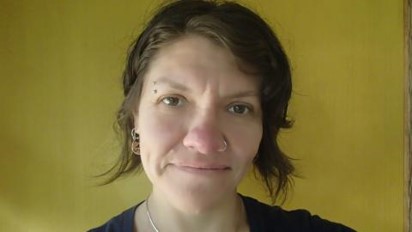
Mi rutina diaria:
¡Hola! ¿Qué tal? Yo voy a hablar de mi rutina diaria. Yo me levanto todos los días a las 8 y media de la mañana. Yo voy al baño y yo me lavo los dientes. Después (after), yo me ducho y yo me lavo el pelo. Yo me seco con mi toalla (towel) favorita jajajaja. Después, yo me preparo café y yo comienzo mi día. Yo trabajo mucho durante el día porque yo soy trabajadora. En la noche mi esposo y yo preparamos la cena. Cenamos a las 6 de la tarde. Luego, (then) mi esposo y yo miramos las noticias (news) en la televisión. Conversamos un poco y después mi esposo y yo nos acostamos a las 11 y media de la noche.
Copy and paste the following letters and symbols as needed.
á é í ó ú ñ Á É Í Ó Ú Ñ ¡ ! ¿ ?
Usos importantes (Important uses)
1. “Después” vs “después de” / “Antes” vs “antes de”.
Después and después de both mean “after” in English. Antes vs antes de both mean “before” in English.
En la unidad 3 you learned that you when writing sentences conjugating actividades en el presente simple indicativo “después” y “antes” can be used as in:
- En la mañana yo trabajo y después descanso.
- En la noche yo veo televisión, pero antes yo hago mi tarea.
You can do the same with verbos reflexivos as in:
- En la mañana yo me ducho y después me visto y trabajo por 3 horas.
- En la noche yo me duermo a las 11pm pero antes yo me lavo la cara y leo mi libro favorito.
Las expresiones “después de” y “antes de” are always followed by an infinitive verb as in:
- Después de cenar a mí me gusta ver la televisión. (After dinner I like to watch TV)
- Antes de comer yo me lavo las manos. (Before eating I wash my hands)
When “después de” y “antes de” are followed by an infinitive reflexive verb, the reflexive pronoun that agrees with the subject is attached at the end of the infinitive form as in:
- Después de levantarme yo me ducho y desayuno. (After getting up I shower and have breakfast)
- Mi esposo lee su libro favorito antes de dormirse. (My husband reads his favourite book before falling asleep)
- Nosotras desayunamos antes de irnos a la escuela. (We (females) have breakfast before going to school)
2. La expresión “Tener que”.
En la unidad 2 you learned that la expresisón tener que means obligation or necessity and that to express obligation “tener que” is always followed by an infinitive verb as in:
- En la casa yo tengo que cocinar.
- En la escuela nosotros tenemos que estudiar.
When “tener que “ is used with an infinitive reflexive verb, the reflexive pronoun that agrees with the subject can be placed in the sentence before the expression “tener que” or can be attached at the end of the infinitive reflexive verb.
| Before “tener que” | Attached to the infinitive reflexive verb |
|---|---|
| Yo me tengo que lavar (I have to wash my self) | Yo tengo que lavarme. (I have to wash my self) |
| Ella se tiene que lavar. (She has to wash herself) | Ella tiene que lavarse. (She has to wash herself) |
¡A practicar!
All sentences below express obligation with “tener que” using a reflexive verb:
Ahora translate las oraciones que siguen del ingés al español. Remember that you can use either option learned above describing obligation with “tener queue”:
Copy and paste the following letters and symbols as needed.
á é í ó ú ñ Á É Í Ó Ú Ñ ¡ ! ¿ ?
- Marta has to brush her teeth.
- I have to brush my hair.
- We have to shower.
- They (males) have to shave.
- You (informal) have to put on makeup.
- You (formal) have to bathe.
3. El verbo “Ir”.
En la unidad 4 you learned that el verbo “ir“ can be used to talk about near future plans, and that in this case, el verbo ir is always followed by an activitidad en infinitivo as in:
ir (en presente simple indicativo) + a + verbo infinitivo
- El fin de semana yo voy a visitar la galería de arte con mi hermana. (On the weekend I will visit the art gallery with my sister / On the weekend I am going to visit the art gallery with my sister)
- Mañana mi mamá va a ir a Calgary por el fin de semana. (Tomorrow my mom will go to Calgary for the weekend / Tomorrow my mom is going to Calgary for the weekend)
When “ir” is used to talk about near future plans involving an infinitive reflexive verb, the reflexive pronoun that agrees with the subject can be placed in the sentence before the conjugated verb “ir” or can be attached at the end of the infinitive reflexive verb.
| Before the conjugated verb “ir” | Attached to the infinitive “ir” |
| Yo me voy a duchar (I am going to shower) | Yo voy a ducharme. (I am going to shower) |
| Ella se va a lavar. (She is going to wash herself) | Ella va a lavarse. (She is going to wash herself) |
| Ellos se van a lavar los dientes. (They are going to brush their teeth) | Ellos van a lavarse los dientes. (They are going to brush their teeth) |
| Nosotras nos vamos a preparar para el trabajo. (We are going to prepare for work) | Nosotras vamos a prepararnos para el trabajo. (We are going to prepare for work) |
¡A practicar!
All sentences below express future plans with the verb “ir” using a reflexive verb:
Mira las imágenes que siguen y escribe el vocabulario de la actividad reflexiva que van a hacer ellos mañana.
Ahora use el vocabulario de las actividades reflexivas that you identified above and answer in full sentences en español the following pregunta:
¿Qué van a hacer las personas mañana? (What are these people going to do tomorrow?)
Copy and paste the following letters and symbols as needed.
á é í ó ú ñ Á É Í Ó Ú Ñ ¡ ! ¿ ?
Cultura hispanohablante
(Spanish-speaking Culture)
Las comidas y sus horas en países hispanohablantes
(Meals and meal-time in Spanish-speaking countries)
En la cultura hispanohablante normalmente hay 3 comidas al día:
- El desayuno: Normally very light. Although it varies from country to country, and family to family, it is common to have either coffee, tea, mate, or a glass of juice accompanied by a piece or slide of bread
- La hora del desayuno also varies, but generally it tends to happen between 6:00 am and 10:00 am.
- El almuerzo: The most important and biggest meal of the day. Although the dish may vary from country to country, el almuerzo, can have a salad, a side dish, a main dish, a drink and a dessert. It is very common to have different types of meat, rice, potatoes, or stews.
- La hora del almuerzo time also varies, but generally it tends to happen between Noon and 4:00 pm
- La cena: Like el desayuno, dinner is also light and the time people eat varies from country to country. It is usually a soup or snacks.
- La hora de la cena varies the most from country to country. In fact, en España y Argentina people have dinner very late, normally at 10:00 pm or after. Other countries may have dinner between 6:00 pm and 9:00 pm.
¿Sabías que…? (Did you know…?)
1. Las once
Chile y Colombia distinguish themselves from other Spanish-speaking countries as they have a unique meal called las once[1]?
To learn about las once en Chile haz clic en el enlace below:
Las once[2].
2. La sobremesa
When possible, las comidas en los países hispanohablantes are still eaten with others, either with la familia o los amigos.
Así, it is very common that after the meal las personas hispanohablantes stay at the table and chat with others for a while. This after meal over the table talk is known as la sobremesa and can last for long time, especially on the weekends.
La sobremesa is a time to relax and converse with others about anything.
¡A escuchar!
Mira el video que sigue about la sobremesa to learn more about this common practice en los países hispanohablantes:
En mi opinión…
Is meal-time in your culture or country where you live similar to or different from la hora de las comidas en los países hispanohlantes? Reflect in English.
Does your culture or country where you live have something similar to la sobremesa? Share in English about unique practices in your culture when it comes to meals and mealtime.
Media Attributions
- Brush teeth © Keira Burton is licensed under a CC BY-ND (Attribution NoDerivatives) license
- Get mad © Moose Photos is licensed under a CC BY-NC (Attribution NonCommercial) license
- Boda © Rickson Bejar is licensed under a CC BY-NC (Attribution NonCommercial) license
- Partes del verbo infinitivo © Ana Robles and Constanza Rojas-Primus is licensed under a CC BY-NC (Attribution NonCommercial) license
- Verbo reflexivo © Constanza Rojas-Primus is licensed under a CC BY-NC (Attribution NonCommercial) license
- Woman sleeping in bed © cottonbro studio is licensed under a CC BY-NC (Attribution NonCommercial) license
- La profesora Constanza Rojas-Primus © Constanza Rojas-Primus is licensed under a CC BY-NC (Attribution NonCommercial) license
- Acciones reflexivas para mañana © Ana Robles and Constanza Rojas-Primus is licensed under a CC BY-NC (Attribution NonCommercial) license
- Outdoor dinner © Askar Abayev is licensed under a CC BY-NC (Attribution NonCommercial) license
for example
click on
let´s practice!
answer
you - informal
thus, so, thereby
bathroom
that follow
more practice!
make a list
that
fill out
regular verbs
irregular verbs
to dance
to run
to write
activities
now
look at, watch
image
what follows, below
infinitive, any verb or action that is preceded by the word 'to' in English is an infinitive. For example: to love, to eat, to run, to be, to believe, to follow, to laugh, etc. This means that the actions are not yet conjugated in the present tense or in any other tense.
to get up
to put on makeup
to go to bed
to go to sleep
to leave
to get ready
then, hence
attention!
to wash
to wash oneself
study
to listen (as a command)
write (as a command)
after
seat
read (as a command)
description
images
tomorrow
normally
there is / there are
breakfast
the time
lunch
dinner
and
link
the time after a meal to relax and talk with others at the table.
let´s listen!
in my opinion
meals

